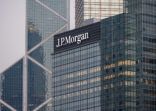Nicola Rawlinson, JP Morgan Asset Management
“We have been managing our net equity exposure close to zero, which is calculated by netting off long physical equity exposure with mostly short derivatives positions,” said Nicola Rawlinson, investment specialist, macro strategies, and one of seven people responsible for the $1.8bn JP Morgan Global Macro Opportunities Fund.
The fund, whose lead manager is Shrenick Shah, can use derivatives to take short positions in a manner similar to hedge funds, but typically not allowed for conventional long-only funds. This flexibility is helpful when prices across asset classes are so closely correlated, as in the type of severe market downturn experienced in March.
“Short equity derivative exposures have been the biggest positive contributors to returns in the last few weeks, while shorting the South African rand and Canadian dollar exposures have also added notable value,” Rawlinson told FSA in interview last week.
The main unit of the fund, which is UK-sterling denominated, has returned +3.46% year-to-date in local currency terms, but the Sicav (USD-hedged) vehicle authorised for sale to Singapore retail investors since January 2016, has posted -5.23% in US dollar terms, according to FE Fundinfo data.
Although negative, the return is better than the average -8.63% return of other absolute return funds available in Singapore. Over three years, it has generated a +19.92% cumulative return, significantly outperforming its peers (-5.57%).
Morningstar highlighted the rapid maneuverability of the fund’s process and strategy in its most recent report, in June 2019.
“With risks highlighted in real time, Shah has the ability to act quickly to remove a position or theme if he believes it will negatively impact the overall portfolio’s risk-reward profile. This approach has proved successful, resulting in robust absolute and risk-adjusted results,” noted the investment research firm.
Tactical flexibility
Rawlinson explained how the portfolio has changed during recent weeks, and how the managers have used a number of derivative tools to implement sometimes daily shifts.
“As the [Covid-19] outbreak began to expand globally, we added long US large-cap put options [the right to sell] strategy for protection from a risk-off scenario in markets, bringing down our net equity exposure. This strategy added significant value in late February and early March ” she said.
“But as options became more expensive following the initial market sell-off in the first week of March, we transitioned to achieving short exposure predominantly through index futures in order to continue to manage a low level of overall risk.
“We have let risk increase slightly at points in the last couple of weeks when we felt the market might re-rate somewhat on monetary, liquidity and fiscal stimulus announcements. However, the market continued to be buffeted by the escalation of the virus, particularly in the US and Europe.
“As such, we continue to closely monitor containment measures and the number of cases and maintain a low level of risk, predominantly achieved through short derivatives exposures and defensive currency strategies such as long Japanese yen, while our long physical equity is focused in high quality names,” she said.
Yet, the fund has implemented these protection measures, while retaining physical (or cash) equity positions that are core to its long-term view.
The investment process begins with identifying several broad macro themes — such as technology adoption and, most recently, climate change — which are implemented through 20-40 individual strategies that are distinguished between traditional cash investments and sophisticated derivatives across asset classes. Stock selection is a key component of the process, with the thematic themes expressed as a basket of appropriate stocks.
“Within physical equity we hold high conviction, liquid names with a focus on quality and we have reduced cyclical exposure. By sector, our bias is towards technology and we benefited from not holding energy stocks,” said Rawlinson.
The macro thesis is reviewed regularly, as are idea implementations.
“High frequency data is especially critical now as policy makers respond to the Covid-19 outbreak and investors monitor economic activity releases. Through the use of derivatives, we have the flexibility to adjust the risk-return profile of the portfolio quickly while maintaining confidence in our longer-term themes,” said Rawlinson.
Nevertheless, the market downturn is putting pressure on the fund’s ability to earn its annual target of cash plus 7%, while its annualised volatility of 12.29% (in US dollar terms) is above its sub-10% objective, according to FE Fundinfo data.
Some wealth managers, for instance Citi Private Bank, have suggested that their clients should raise their allocations to alternatives, such as hedge funds, which can diversify fixed income investments into areas uncorrelated with public bond funds. A traditional fund with a macro equity strategy that puts on large, active derivative overlays might offer a viable option for equity investors too.
Meanwhile, JPM AM applied to the Monetary Authority of Singapore in January to launch its Multi-Manager Alternatives Fund, which invests in alternative strategies — including long/short equity — managed by third-party asset managers.
JP Morgan Global Macro Opportunities Fund: portfolio risk characteristics
Theme risk*
| Widespread technology adoption |
22.8% |
| Supply side weakness |
21.3% |
| Global policy evolution |
13.9% |
| Europe in the balance |
11.0% |
| China in transition |
9.2% |
| Emerging market convergence |
8.5% |
| Maturing US cycle |
8.3% |
| Japan beyond Abenomics |
2.7% |
| Climate change response |
2.3% |
Regional risk*
| North America |
29.6% |
| Europe ex UK |
27.7% |
| Asia ex Japan |
19.3% |
| Emerging markets |
11.5% |
| Japan |
9.6% |
| UK |
2.3% |
Asset class risk*
| Equity |
67.7% |
| Advanced derivatives |
25.3% |
| Currency |
5.2% |
| Fixed income |
1.9% |
Source: JP Morgan Global Macro Opportunities Fund factsheet (29, February 2020)
*Ex-ante standard deviation as proportion of total (i.e. analysis of portfolio holdings to estimate future return streams and their projected variability based upon statistical assumptions)
JP Morgan Global Macro Opportunities Fund vs Absolute Return Fund Sector (Singapore) Average


















